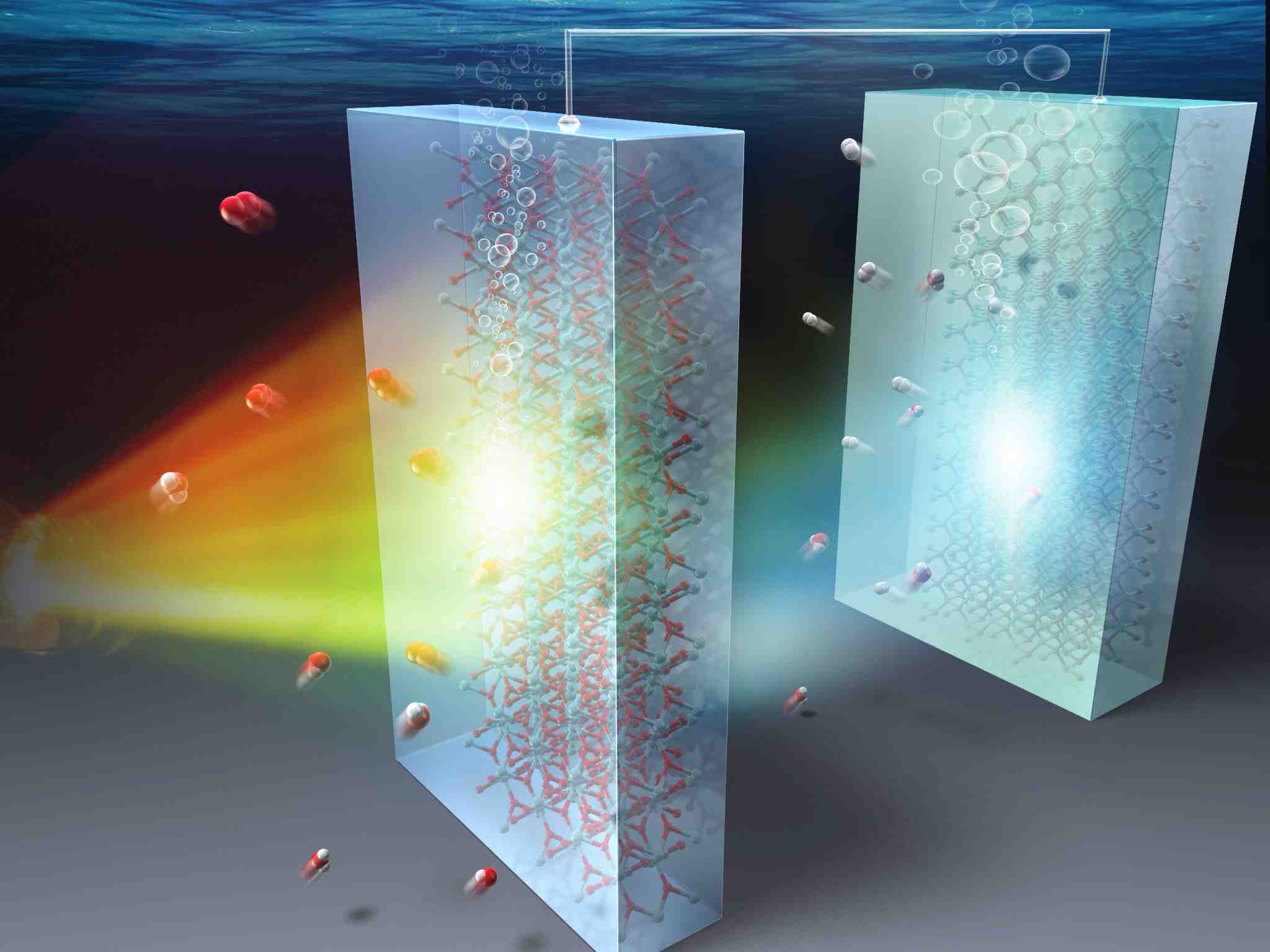RESEARCH NEWS - Giving a "Tandem" Boost to Solar-powered Water Splitting
Category:News|Publishing : July 12, 2021
Turning away from fossil fuels is necessary if we are to avert an environmental crisis due to global warming. Both industry and academia have been focusing heavily on hydrogen as a feasible clean alternative. Hydrogen is practically inexhaustible and when used to generate energy, only produces water vapor. However, to realize a truly eco-friendly hydrogen society, we need to be able to mass-produce hydrogen cleanly in the first place.
One way to do that is by splitting water via "artificial photosynthesis," a process in which materials called "photocatalysts" leverage solar energy to produce oxygen and hydrogen from water. However, the available photocatalysts are not yet where they need to be to make solar-powered water splitting economically feasible and scalable. To get them there, two main problems should be solved: the low solar-to-hydrogen (STH) conversion efficiency and the insufficient durability of photoelectrochemical water splitting cells.
At Nagoya Institute of Technology, Japan, Professor Masashi Kato and his colleagues have been working hard to take photocatalysts to the next level by exploring new materials and their combinations and gaining insight into the physicochemical mechanisms that underlie their performances. In their latest study published in Solar Energy Materials and Solar Cells, Dr. Kato and his team have now managed to do just that by combining titanium oxide (TiO2) and p-type cubic SiC (3C-SiC), two promising photocatalyst materials, into a tandem structure that makes for a highly durable and efficient water splitting cell (see Figure).
The tandem structure explored by the team in their study has both the photocatalyst materials in series, with a semi-transparent TiO2 operating as a photoanode and 3C-SiC as a photocathode. Since each material absorbs solar energy at different frequency bands, the tandem structure can markedly increase the conversion efficiency of the water splitting cell by allowing more of the incoming light to excite charge carriers and generate the necessary currents.
The team measured the effects of applied external voltage and pH on the photocurrents generated in the cell and then conducted water splitting experiments under different light intensities. They also measured the amounts of oxygen and hydrogen generated. The results were highly encouraging, as Dr. Kato remarks: "The maximum applied-bias photon-to-current efficiency measured was 0.74%. This value, coupled with the observed durability of about 100 days, puts our water splitting system among the best currently available." Moreover, the findings of this study hinted at some of the potential mechanisms behind the observed performance of the proposed tandem structure.
Further research is needed to continue improving photoelectrochemical water splitting systems until they become widely applicable. Still, this study is clearly a step towards a clean future. "Our contributions shall accelerate the development of artificial photosynthesis technologies, which will generate energy resources directly from solar light. Thus, our findings may assist in the realization of sustainable societies," says Dr. Kato, speaking of his vision.
We certainly hope the future he envisions is not too far away!

Figure: Tandem structure for photoelectrochemical water splitting
The use of a semitransparent TiO2 photoanode allows the SiC photocathode to make use of the transmitted light. Using photocatalysts with different energy gaps results in increased conversion efficiency.
Image courtesy: Masashi Kato from Nagoya Institute of Technology
Reference
|
Title of original paper |
Durable and efficient photoelectrochemical water splitting using TiO2 and 3C-SiC single crystals in a tandem structure |
|
Journal |
Solar Energy Materials and Solar Cells |
|
DOI |
About Associate Professor Masashi Kato
Dr. Masashi Kato graduated in Electrical and Computer Engineering from Nagoya Institute of Technology in 1998 and then proceeded to obtain both a Master's (2000) and a PhD (2003) in the same field. He is currently an Associate Professor of Semiconductor Physics and has published over 70 papers in the course of his career. His field of expertise and research interests lie within electronic/electric materials and device-related chemistry. He has also been a member of The Japan Society of Applied Physics for nearly two decades.
Funding information
This work was partly supported by the JSPS Japanese-German Graduate Externship (Grant No. 2019/R1).
Contact
Associate Professor Masashi Kato
Email: kato.masashi[at]nitech.ac.jp
TEL : +81-52-735-5581
Links : Ichimura & Kato Lab.
*Please replace [at] with @ when contacting .
RESEARCH NEWS - Through the Looking Glass: Unravelling How Ions Move in Phosphate Glass RESEARCH NEWS - Paving the Way to Artificial PhotosynthesisーEffect of Doping on the Photocatalyst SrTiO3

 Japanese
Japanese